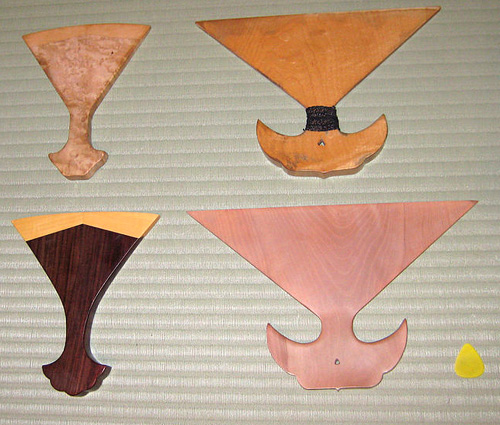琵琶
A biwa is a Japanese traditional instrument usually translated into English as a "short-necked lute" with four strings and played with a plectrum.
The biwa can be made from a variety of wood including rosewood, cherry, mulberry and zelkova.
The biwa is related to the Persian oud and probably came to Japan via China sometime before the Nara Period (710-794).
The biwa is usually held upwards from the lap while the players sits in seza (a kneeling position) and plucked with the large triangular-shaped plectrum.
The biwa became associated with court music (gagaku) in the Heian Period (794-1192). Many of the later players were blind and sang narrative songs to the accompaniment of the biwa, often about the battles of the Heike and Genji clans from the classic Tale of the Heike (平家物語).
The biwa remained a popular instrument in Japan until the end of the Edo Period and the coming of western instruments and music from the 1870s onward.
Later variations of the instrument originated in Kyushu and are called Chikuzen biwa and Satsuma biwa, the later style popular with the region's samurai to encourage their martial values listening to tales of past heroism and derring-do.
© JapanVisitor.com
Like this blog? Sign up for the JapanVisitor newsletter
Books on Japan
Tags
Japan
instrument
Japanese instrument
Biwa
Japanese music


No comments:
Post a Comment